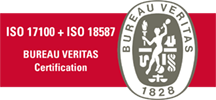
The standard presents the necessary requirements for the provision of a high-quality translation service. What were, then, the main changes that have been introduced?
- The new standard provides an extended list of forty-two terms and definitions regarding different concepts pertaining to translation services, the translation workflow and technology and the control of the translation process, among others.
- It also takes into consideration the tools and IT systems as a support to the translation process. According to the standard, translators and reviewers as well as translation service providers should have the necessary knowledge and resources to be able to carry out the technical tasks required by the translation project.
- It distinguishes between various types of review: check, revision, review, proofreading and final verification. The check is an overall self-revision of the translation by the translator prior to delivery. The revision is mandatory and must include a bilingual comparison of the source and target languages. The review is a monolingual revision of the target language by an expert who is not necessarily a translator. The proofreading is the final revision prior to printing. The project manager must then carry out the final verification to confirm that all specifications have been met.
- The translation project manager profile is defined by the ISO Standard 17100: 2015 as responsible for all aspects of the production process. The steps that should be carried out when managing a translation project are also specified.
- It also establishes the processes and phases of a translation project. It distinguishes between pre-production, production and post-production processes, as well as providing a breakdown of each one of the activities involved in each phase.
The new standard includes six informative annexes with suggestions, such as contractual specifications, translation technologies or management forms and reports. As of the date of its publication, organisations must be certified according to the ISO 17100: 2015.

